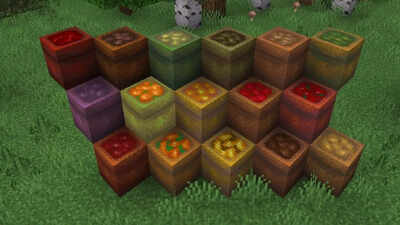- News
- Types and uses of Blocks in Minecraft
Types and uses of Blocks in Minecraft
Minecraft offers over 600 unique blocks that form the basis of its world, each with distinct behaviors and uses. Key categories include wood, stone, environmental, redstone, and decorative blocks. Special blocks like the beacon and dragon egg have unique functions and rarity. Mastering block types enhances creativity, survival, and gameplay experiences.
Minecraft is a game built on exploration, creativity, and survival. At its core are blocks that makeup Minecraft’s world. With the game having over 600 unique blocks, each of them carries a distinct behavior, texture, and purpose. To understand their types and uses, it’s important to master the game. Let us dive into the diverse Minecraft blocks world and how they exactly shape the gameplay.
Understanding the Block Behavior
Minecraft Blocks occupy a 3-dimensional grid. They form the gaming world’s foundation. Most of the blocks are solid. They fill the entire grid space, like Dirt or stone, while the others, like tall grass or flowers, are semi-transparent and do not take up a full block. Some of the blocks defy the norm— like air blocks. They are invisible. They act like placeholders for the empty spaces.
Some blocks even carry unique properties. The gravity-affected blocks, like Gravel or sand, fall until they land on a solid surface. The light-emitting blocks, like glowstone or torches, illuminate surroundings, with the opaque blocks working to block light and the transparent blocks allowing them to let the light pass through. Such behaviors make the blocks more than just any building materials. They are the tools required to create complex designs and mechanisms.
Minecraft Blocks Categories
The Minecraft Blocks can be grouped into varied categories based on their properties and functionality. Here are some important ones.
Wood Blocks
The Wood Blocks are versatile. They are required for early-game survival. They are used for crafting tools, creating decorative items, and building shelters. But they are flammable. So, caution is required when the building is near lava or fire. Some examples of it are,
- Birch, Acacia, Spruce, and Oak- the variants bring varied aesthetics to the builds.
- Crafting Table- it is a must-have to craft some advanced items.
- Bookshelf- it enhances the enchanting tables to make better enchantments.
Stone Blocks
They are fire-resistant, durable, and quite ideal for sturdy constructions. They are mined with the pickaxe. They come in varied forms, like,
- Cobblestone- a common block that is used for structures and basic tools.
- Obsidian- these are extremely tough. They are used for the enchantment tables and Nether portals.
- Polished Andesite and Granite- the Decorative blocks can add texture to the builds.
Environmental Blocks
The blocks make up Minecraft’s natural world, and they carry unique interactions. Some of these blocks are,
- Sand and Gravel- these are gravity-affected blocks that are used for crafting and construction.
- Grass and Dirt- they are essential for landscaping and farming.
- Sponges- they absorb water. This makes them quite invaluable for underwater projects.
Redstone Blocks
These blocks are the electrical system in Minecraft’s backbone. They enable the players to create the complex machines and the circuits. Some of these blocks are,
- Pistons and Sticky Pistons- they move the blocks automatically.
Redstone Dust- they transmit power to the devices.- Redstone Lamps- they light the sources, controlled by the Redstone signals.
Decorative Blocks
The blocks are required for adding flair to the builds and include,
- Terracotta- offers patterned textures for creative builds.
- Stained glass comes in varied colors for vibrant designs.
- Flowers and Plants- they bring color and life to the landscapes.
Special Blocks and Their Uses
There are some blocks that stand out for their unique functions and rarity.
- Beacon- It provides the players with buffs when they are powered by rare blocks like emeralds or diamonds.
- Diamond Block- it is the symbol of wealth and power. It is used to craft the high-tier tools and the beacons.
- Dragon Egg- these are the rarest blocks that are obtained only after the player defeats the Ender Dragon.
Placing and Using Minecraft Blocks
To place blocks is quite simple. Simply select them in Hotbar and then right-click where you wish them to be. However, there are some blocks that have placement restrictions. For example, gravel and sand fall if they are placed unsupported. While the flowers can be placed only on grass or sand. Understanding the rules is the key to effective builds.
The Minecraft Blocks are more than just the pixels. They are building blocks of survival and creativity. From the humble dirt blocks to the elusive dragon egg, every block has an important role to play in the journey of Minecraft gameplay. So, whether you are building, crafting, or exploring, mastering the types and the blocks used will elevate your experience in Minecraft and will take it to newer heights. So, grab a pickaxe, gather some resources, and simply start building the blocky masterpiece today!

About the Author
TOI Sports DeskEnd of Article
FOLLOW US ON SOCIAL MEDIA







